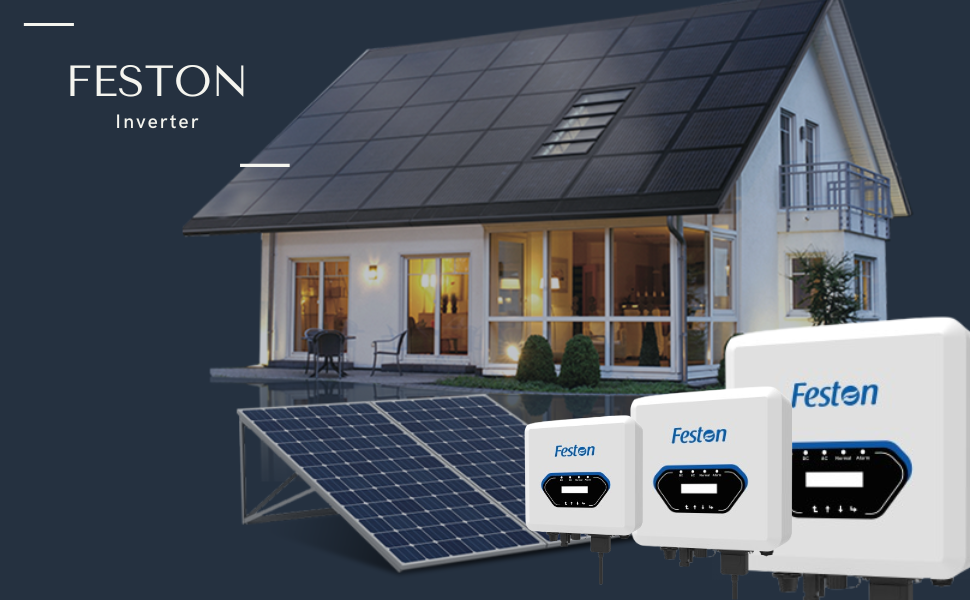The solar inverter. This device is the heart and brain of any solar power system. It converts the sun's energy into usable electricity for your home or business and plays a key role in overall system performance. In this blog, we’ll break down what solar inverters do and compare the three main types: String Inverters, micro inverters, and Hybrid Inverters.

When people think of solar energy, they often picture solar panels soaking up the sun. But there’s a crucial component that’s often overlooked — the solar inverter. This device is the heart and brain of any solar power system. It converts the sun's energy into usable electricity for your home or business and plays a key role in overall system performance.
In this blog, we’ll break down what solar inverters do and compare the three main types: String Inverters, Microinverters, and Hybrid Inverters.
Solar panels generate direct current (DC) electricity. However, homes and the power grid use alternating current (AC). That’s where the solar inverter comes in — it converts DC into AC so your appliances and the electrical grid can use the solar power you generate.
In addition to conversion, modern inverters also:
Monitor system performance
Ensure safety shut-offs
Maximize power output using MPPT (Maximum Power Point Tracking)
How it works:
Solar panels are connected in a series (called a "string") to a single inverter, usually installed on a wall or in a utility area.
Best for:
Rooftops with consistent sunlight
Simple layouts
Budget-conscious installations
Pros:
Cost-effective
Easy to maintain
Proven, mature technology
Cons:
If one panel underperforms (shading, dirt), the whole string is affected
Less efficient for complex or shaded roofs
How it works:
Each solar panel has its own microinverter mounted directly beneath it, converting DC to AC right at the panel.
Best for:
Roofs with shade or multiple angles
Residential and small commercial projects
Pros:
Maximizes performance of each individual panel
Easy to expand system later
Real-time monitoring per panel
Cons:
Higher upfront cost
More complex maintenance if issues occur
How it works:
Hybrid inverters combine the functions of a solar inverter and a battery inverter. They manage power from solar panels, the grid, and battery storage.
Best for:
Homes with battery backup
Areas with unreliable grid power
Users aiming for energy independence
Pros:
Seamless integration of solar and storage
Smart energy management
Can work in grid-tied or off-grid mode
Cons:
More expensive than string inverters
Requires more technical setup
| Feature | String Inverter | Microinverter | Hybrid Inverter |
|---|---|---|---|
| Efficiency | Medium (if no shading) | High (per-panel MPPT) | High (with battery) |
| Cost | Low | High | Medium to High |
| Scalability | Moderate | Excellent | Excellent |
| Best Use Case | Simple, sunny roofs | Complex or shaded roofs | Battery + solar systems |
| Monitoring | At string level | Per panel | System-wide |
Choose a String Inverter if you’re looking for a reliable, budget-friendly system with full sun exposure.
Opt for Microinverters if your roof has multiple angles or shading, or if you want detailed panel-level monitoring.
Go with a Hybrid Inverter if you plan to add a battery system, want to reduce grid dependence, or need backup during outages.
Solar inverters are critical to maximizing the performance, safety, and flexibility of your solar power system. Whether you're powering a small home or a large business, choosing the right inverter type — string, micro, or hybrid — can make all the difference in your solar journey.
As solar technology evolves, inverters are becoming smarter, more efficient, and more adaptable than ever. So when planning your system, don’t just focus on panels — make sure the inverter matches your energy goals and site conditions.